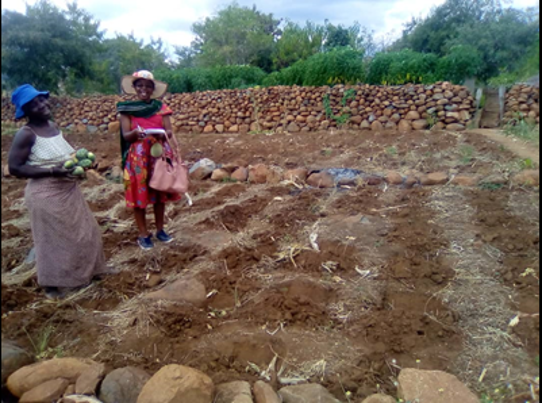Background
Food insecurity caused by climate change needs adaptation strategies to combat poverty and hunger amongst poor subsistence farmers in developing countries by increasing food and timber production, and resilience to climate extremes. On one hand a modern mixed approach system targets the various farm variables of water, soil, micro-climate, seeds, labour and capital.
This edifies farmers’ climate change adaptation capacities since it improves their ability to respond to increased variability and rates of climate induced phenomena. On the other hand, there is indigenous knowledge that represents an alternative way of thinking, which has evolved over time as a way of communities to safeguard farmers from variations in the local climate. This brings about the need to use both indigenous knowledge and modern climate change adaptation strategies for improved food security.
Description
Key informant interviews, focus group discussions and a questionnaire survey with 60 farmers were conducted to identify indigenous and modern climate change adaptation strategies used to decrease food insecurity.
Indigenous strategies identified were: Dry planting; planting small grains; livestock production and forecasting the rain season through use of trees and insects. In addition, farmers brewed traditional beverages as well as observed sacred places like mountains, water sources and traditional local holidays to appease ancestral spirits so that adequate rainfall may be received.
As a modern strategy conservation agriculture “pfumvudza” was named including: Soil and moisture conservation techniques; mulching by using locally available material like manure, dry grass or leaves; use of bio-fertilizers; adoption of sustainable small grain crops production, such as sorghum, that are resilient to threatening climate change effects of low moisture and higher temperatures.
Resultantly farmers combined indigenous and modern knowledge systems in climate change adaptation strategies for improved food security.

Impact
The project re-defined some of the indigenous climate change strategies that were used but somehow were no longer viewed as important due to the advent of modern strategies. Through discussions, farmers realised that modern climate change adaptation strategies embodied indigenous adaptation strategies. Discussions held during data collection were platforms for farmers to exchange ideas.
The project was instrumental in mindset changing by pronouncing that indigenous and modern climate change adaptation strategies could be used in combination for improved food security.
Lessons learned
There is need to have a plan of action to ensure that all processes have adequate time and resources in order to have a good report in the end. It is also important to build a rapport with both study participants and relevant stakeholders since these are key in the data collection process. Feedback to stakeholders is critical since it ensures that project findings are given back to the community.